“The Memoirs of a Geisha” is my favourite cultural novel, so I ended up watching the movie, and guess what, where’s it shot? Mostly in Kyoto, and that’s when Kyoto was added to my bucket list!
Do you want to know what fascinated me to visit this city? Its rich cultural heritage of the past is preserved and lived. The clacking of women’s wooden sandals in the beautiful neighbourhood, the surreal alleys that hold the generational houses, and the calming whispers of history echoing through its ancient shrines and markets create an atmosphere unlike any other. So, take note of the best things to do in Kyoto, Japan.
Quick Kyoto’s Highlights:
|
List of the Best Things to Do in Kyoto
Kyoto is a beautiful city. There are many places to visit and things to do in Kyoto, starting with the colourful Gion area (where you can learn about Geisha culture), beautiful ancient temples, and bamboo forests. In this guide, I’ve listed the 20 best things to do in Kyoto, which highlights the beauty of the city. This guide is a perfect combination of tourist favourites and offbeat gems to plan a memorable vacation to this timeless Japanese city.
It’s a place where every footstep feels like a journey through time, inviting visitors to experience its unique history and culture.
So, let’s plan all the things you can do in Kyoto-
Fushimi Inari Shrine
Get ready to walk through thousands of red torii gates at Fushimi Inari Shrine in Kyoto- a must-visit spiritual spot in Japan. It is known for its rich history, peaceful trails, and the mystical charm of Shinto traditions.
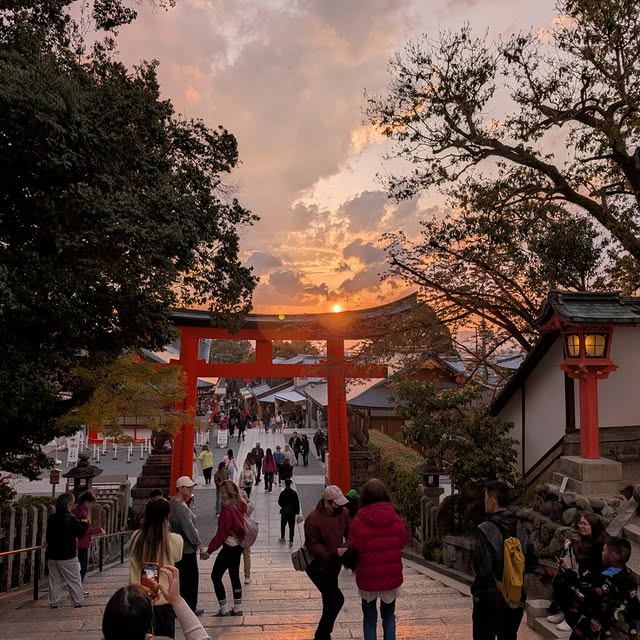
Fushimi Inari Shrine is one of the most famous and photographed places in Kyoto, and also appears in the movie. When you arrive, you will see a beautiful path with thousands of bright red torii gates that lead up the forested slopes of Mount Inari (where the young Sayuri runs). The trail gradually goes uphill and offers peaceful views, as well as hidden shrines along the way.
Did you know?
|
Importance of this Temple
This Shinto shrine is dedicated to the deity Inari- the God of Rice, Business, and Prosperity. You can see fox statues throughout the grounds. People believe these statues are messengers of Inari, which adds to the shrine’s spiritual charm.
Whether you go for the cultural essence, the photos, or the peaceful walk, Fushimi Inari Shrine is a must-visit in Kyoto. The energy here is both calming and inspiring, making it perfect for early morning or late afternoon visits.
Kinkaku-ji (Golden Pavilion)
Admire the surreal beauty of Kinkaku-ji (Golden Pavilion) in Kyoto- the temple surrounded by serene gardens and a peaceful pond. And learn about its rich history and incredible reflections that make it one of Japan’s top attractions.
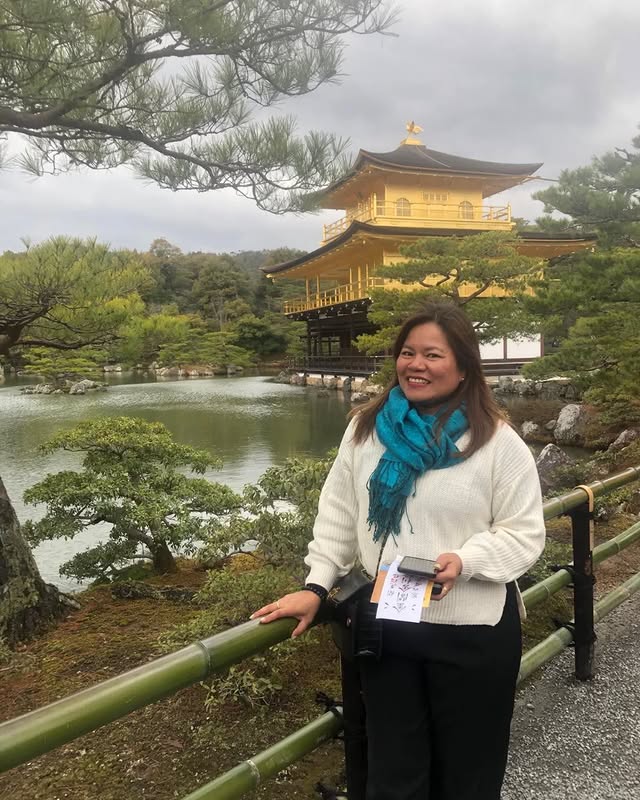
Kinkaku-ji is a pretty Zen temple adorned with genuine gold leaf, situated beside a serene pond that reflects its shimmering beauty. The top two floors are entirely golden, making the whole structure glow, especially on sunny days. The surrounding Japanese gardens add to its charm with neatly trimmed trees, stone paths, and calm waters.
Importance of this Temple
It was built in the 14th century as a villa for a shogun and later became a temple. It showcases the beauty and peaceful spirit of Kyoto. The atmosphere is calm and impressive, attracting visitors from all over the world who come to appreciate its elegance.
Things to See and Do
- Admire the temple’s golden reflection in the pond
- Wander through the traditional Zen gardens
- Try matcha tea at the small teahouse on-site
- Learn the temple’s rich history from visitor plaques
For timeless photos and cultural insight, Kinkaku-ji is a must-visit in Kyoto.
Arashiyama Bamboo Grove
Walk through the beautiful Arashiyama Bamboo Grove- a natural wonder where tall green stalks and filtered sunlight create a magical escape. A must-visit in Kyoto for nature lovers and photographers.
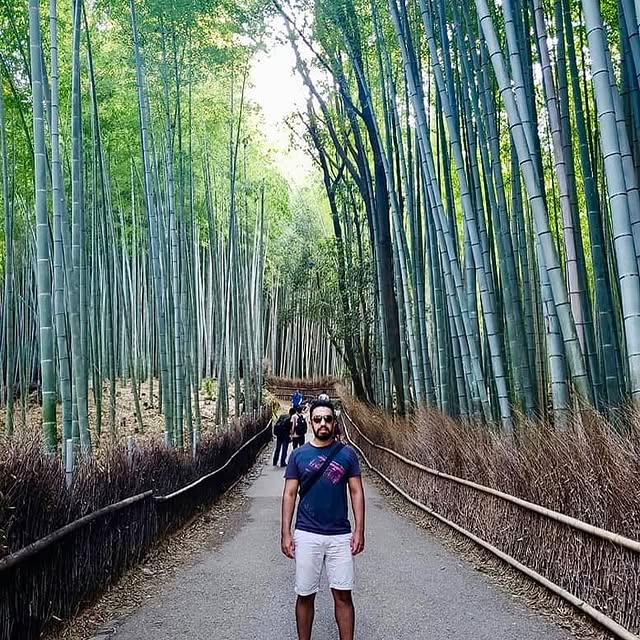
The Arashiyama Bamboo Grove is a pretty path lined with towering bamboo that sways gently in the breeze. The sunlight peeking through the tall green stalks gives the path a dreamy, otherworldly feel. It’s one of the most photographed and peaceful spots in Kyoto.
Importance of this Bamboo Grove
This grove is not just a pretty backdrop- it’s a symbol of tranquillity in Japanese culture. Located in the scenic Arashiyama district, the vibe is calm, quiet, and deeply relaxing. It’s the perfect place to slow down and take in the natural surroundings.
Things to See and Do:
- Walk peacefully along the bamboo path
- Visit nearby Tenryu-ji Temple and its Zen garden
- Rent a kimono and capture stunning photos
- Explore the scenic Togetsukyo Bridge and the riverside
The sound of the bamboo rustling in the wind is even recognised as part of Japan’s “100 Soundscapes”.
Kiyomizu-dera Temple
Visit Kiyomizu-dera Temple in Kyoto for incredible city views, peaceful vibes, and centuries-old spiritual charm. A must-see spot with scenic beauty and cultural depth, especially in autumn.
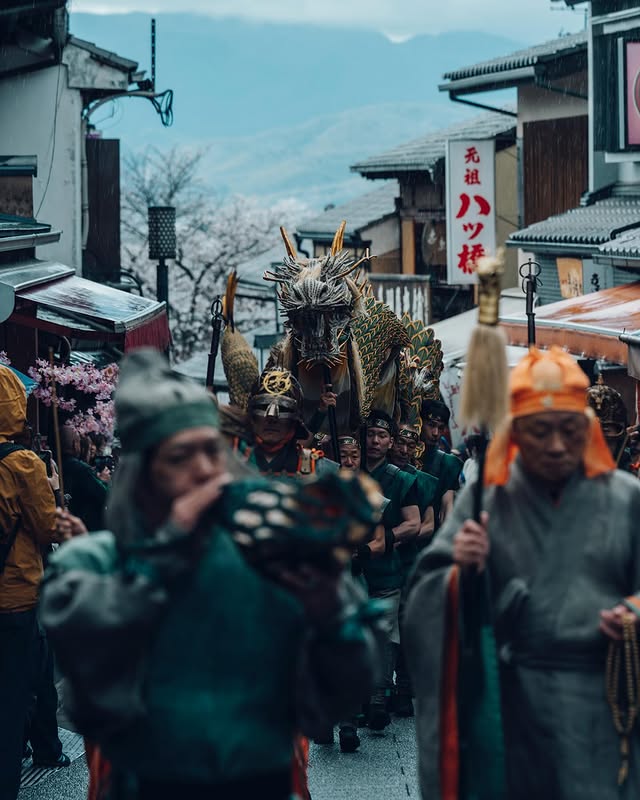
Kiyomizu-dera sits on a hillside with a huge wooden stage that stretches out over the trees. From here, you get incredible views of Kyoto, especially beautiful during the cherry blossom season and autumn. The temple’s traditional wooden design and peaceful setting make it feel timeless.
Importance of this Temple
This temple is over 1,200 years old and was built in the 8th century for Kannon, the goddess of mercy. It’s also a UNESCO World Heritage Site, a spiritual place often visited for prayers and good luck. The vibe is calm, sacred, and refreshing- perfect for a quiet moment or a slow walk.
Things to See and Do
- Walk the wooden terrace for incredible city views
- Drink from the Otowa Waterfall for good luck
- Explore the surrounding historic streets
- Visit Jishu Shrine nearby
For history, scenery, and serenity, Kiyomizu-dera Temple is a must-visit in Kyoto.
Gion District
Step into the historic charm of the Gion District in Kyoto, where geishas, teahouses, and lantern-lit streets bring old Japan to life. A must-visit for culture lovers and photographers.

Gion is one of Kyoto’s most charming and historic areas, known for its old wooden teahouses, narrow lantern-lit streets, and traditional architecture. Walking through it feels like stepping into old Japan, especially along Hanamikoji Street.
Importance of this District
Gion is famous for being Kyoto’s geisha district. It’s one of the few places to visit in Japan where you might still catch a glimpse of a geisha or maiko (apprentice geisha) on their way to an evening appointment. This is the location where most of the movie’s shots were taken. This area has an elegance, culture, and quiet charm, especially after sunset.
Things to See:
- Explore Yasaka Shrine
- Walk along the Shirakawa Canal
- Enjoy a traditional tea ceremony in a historic teahouse
- Attend the famous Gion Matsuri in July
Whether you’re here for history, beauty, or cultural encounters, Gion is a must-visit in Kyoto.
Nishiki Market
Taste the flavours of Kyoto at Nishiki Market- a lively food street packed with local tastes (from fresh seafood to snacks), sights, and culture. A must-visit for foodies and curious travellers alike.
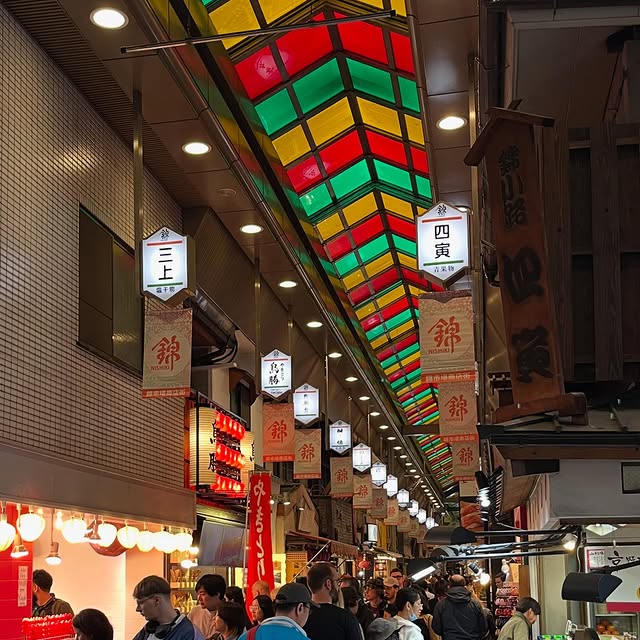
Nishiki Market is a narrow, covered shopping street lined with more than 100 shops and stalls. Located in central Kyoto, it’s bright, colourful, and always buzzing with life. The mix of traditional signs, street food aromas, and friendly vendors creates an exciting, sensory-filled atmosphere.
Importance of this Market
This market, known as “Kyoto’s Kitchen,” has served locals for centuries. It offers fresh seafood, local produce, handmade sweets, and unique pickles. The market has an energetic and welcoming vibe.
Things to See
- Try Kyoto’s famous yuba (tofu skin)
- Sample matcha snacks and traditional sweets
- Browse handcrafted knives and kitchen tools
- Chat with local shopkeepers about their family-run businesses
Whether you’re here to taste, shop, or simply explore, Nishiki Market is a must-visit in Kyoto.
Nijo Castle
Step into Japan’s samurai past at Nijo Castle- a grand UNESCO World Heritage Site in Kyoto that blends power, beauty, and history. This place is a must-see for people who love history and culture.
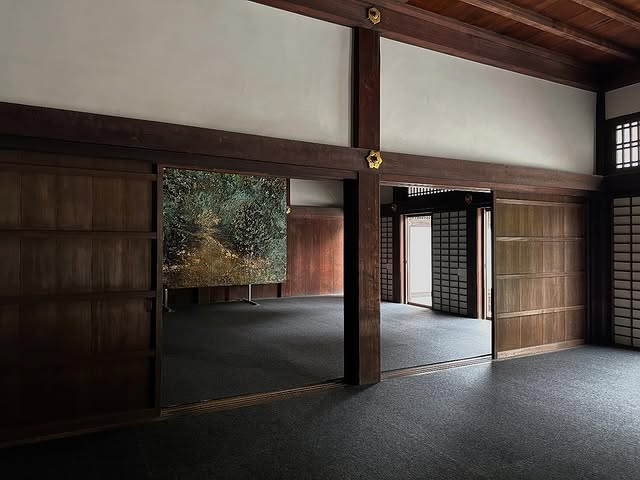
Nijo Castle is a massive and beautifully preserved fortress surrounded by moats, stone walls, and landscaped gardens. Inside, the Ninomaru Palace stuns with its painted sliding doors and intricate wooden floors that chirp like nightingales when walked upon- a clever old security feature.
Importance of this Castle
Built in the 17th century for Tokugawa Ieyasu, the founder of the Edo Shogunate, the castle symbolises power and prestige. Today, it offers a peaceful yet majestic atmosphere, giving visitors a glimpse into Kyoto’s samurai-era glory.
Things to See
- Walk through Ninomaru Palace’s famous “nightingale floors”
- Admire centuries-old wall paintings and sliding screens
- Walk through the seasonal gardens, especially in the cherry blossom season
- Explore the inner moat and the ruins of Honmaru Palace.
Whether you’re into architecture, gardens, or Japanese history, visit Nijo Castle in Kyoto.
Philosopher’s Path in Kyoto
Take a peaceful stroll along the Philosopher’s Path in Kyoto- a scenic walking route lined with cherry trees, temples, and quiet charm. It is the best place to visit for nature lovers and wanderers.
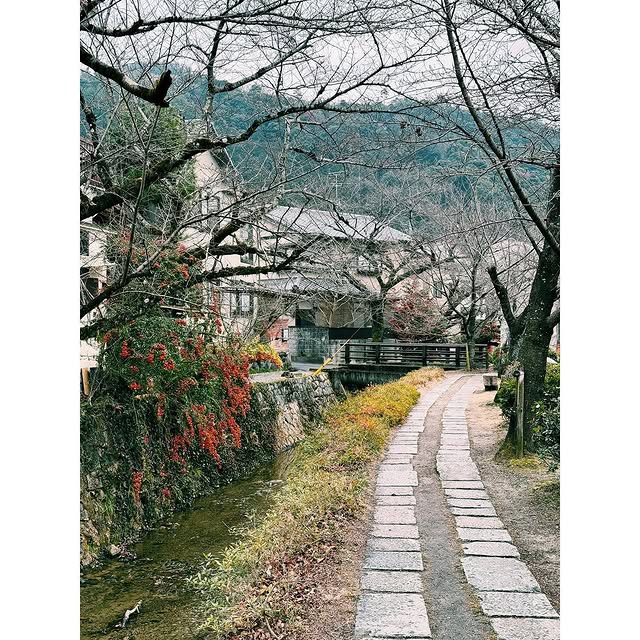
The Philosopher’s Path is a stone walkway next to a calm canal in Kyoto’s Higashiyama district. It’s lined with hundreds of cherry trees that turn the entire path into a dreamy tunnel of blossoms in spring. The route is calm, green, and perfect for a slow, reflective walk.
Importance of Philosopher’s Path
Named after a famous Japanese philosopher who walked this path daily, it’s a place to slow down, clear your mind, and take in the beauty around you. The vibe is peaceful, almost meditative- ideal for quiet moments and thoughtful strolls.
Things to See
- Stop at small temples like Honen-in and Otoyo Shrine
- Explore local art shops and cafés along the way
- Visit Ginkaku-ji (Silver Pavilion) at one end of the route
- Enjoy seasonal beauty, especially cherry blossoms in spring
For a calm break from the city, Philosopher’s Path is a must-visit in Kyoto.
Sanjūsangen-dō Temple
Visit Sanjūsangen-dō Temple to see 1,001 golden statues and learn about Japanese history. This temple is an important cultural site in Kyoto that history and culture lovers should not miss.
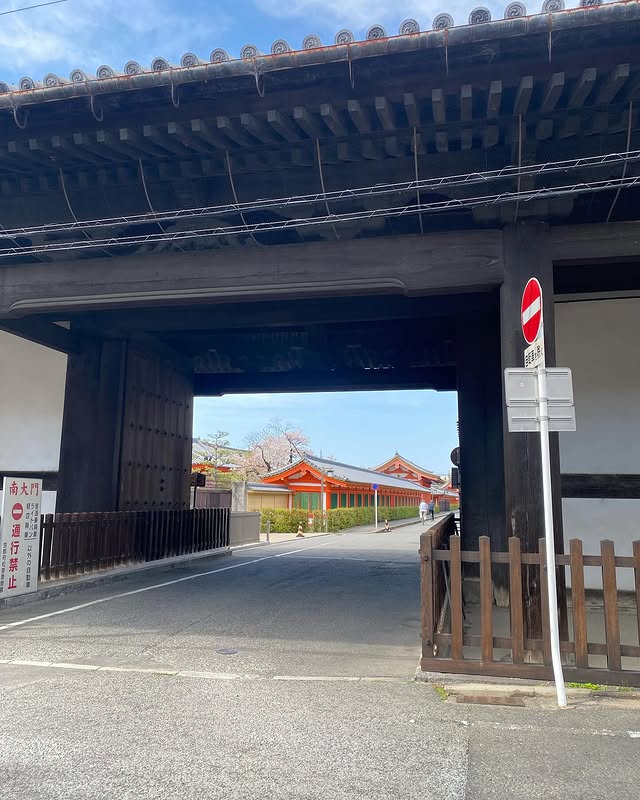
Sanjūsangen-dō is a long wooden hall, one of the longest in Japan. It stretches over 120 meters. Inside, the sight is awe-inspiring: a central statue of the thousand-armed Kannon, surrounded by 1,000 life-sized golden statues lined up in perfect symmetry. The hall feels peaceful, sacred, and grand all at once.
Importance of the Temple
Built in the 13th century, the temple is dedicated to Kannon, the goddess of mercy. The vibe inside is quiet and deeply spiritual, offering a sense of calm and wonder. It’s also known for its connection to archery traditions and yearly competitions held on the temple grounds.
Things to See
- Marvel at the 1,001 Kannon statues
- Admire the traditional wooden architecture
- Visit the temple garden and the peaceful grounds
- Learn about the Toshiya archery ritual
For something truly unique and moving, Sanjūsangen-dō is a must-visit in Kyoto.
Kyoto Imperial Palace
Step into royal history at the Kyoto Imperial Palace- a grand and peaceful complex that once housed Japan’s emperors. This place is a must-see for people who love history and architecture.
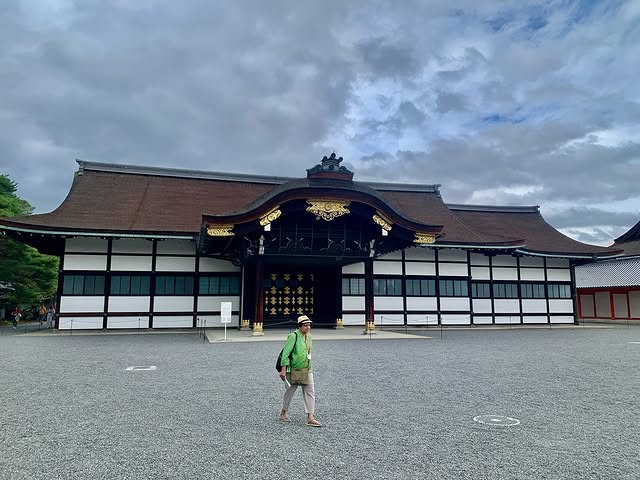
The Kyoto Imperial Palace sits within a spacious park filled with gravel paths, ancient trees, and tranquil gardens. The palace itself features elegant wooden buildings, wide courtyards, and beautiful gates that reflect classic Japanese architecture. Everything feels open, calm, and regal.
Significance of Imperial Palace
This was the official residence of the Imperial Family until the capital moved to Tokyo in 1869. Though no longer in use by royalty, it remains an important cultural site. The atmosphere is quiet and graceful, perfect for a relaxed stroll with a dose of history.
Things to See
- Admire the grand gates and traditional palace buildings
- Walk through the Kyoto Gyoen National Garden
- Join a guided tour to learn about Japan’s royal past
- Enjoy the beauty of plum and cherry blossoms this season.
Ryokan Stay
Experience the heart of Japanese hospitality with a traditional Ryokan stay in Kyoto, where comfort and culture come together. A must-do for those seeking authentic local living.
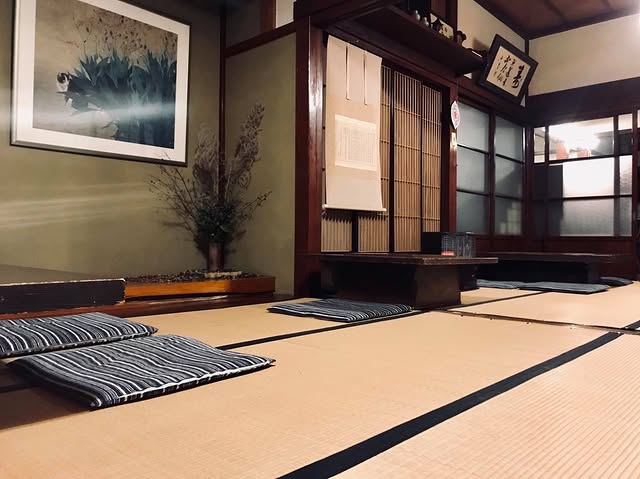
A ryokan is a traditional Japanese inn, often set in peaceful surroundings with tatami-matted rooms, sliding paper doors, and wooden architecture. Inside, expect futon beds, low tables, and a calm, minimalist design that instantly makes you feel at ease.
Why is taking a ryokan stay important?
Staying at a luxury hotel isn’t always great. To experience authentic Japan, a ryokan is the best place to stay. It isn’t just about sleeping- it’s a cultural experience. Guests are treated to ultimate royalty- warm hospitality, often with multi-course kaiseki meals and access to onsen-style baths. The atmosphere is serene, personal, and deeply rooted in Japanese tradition.
Things to Experience
- Enjoy a tatami room wearing your Yukata robe.
- Enjoy a seasonal kaiseki dinner prepared with local ingredients
- Unwind in a private or shared hot spring bath
- Experience omotenashi, Japan’s unique style of heartfelt service
For an authentic taste of local life, a ryokan stay is a must-do in Kyoto.
Japanese Tea Ceremony
Take part in a traditional Japanese Tea Ceremony in Kyoto- a graceful ritual that combines mindfulness, culture, and hospitality. It is a must-try experience for culture lovers.
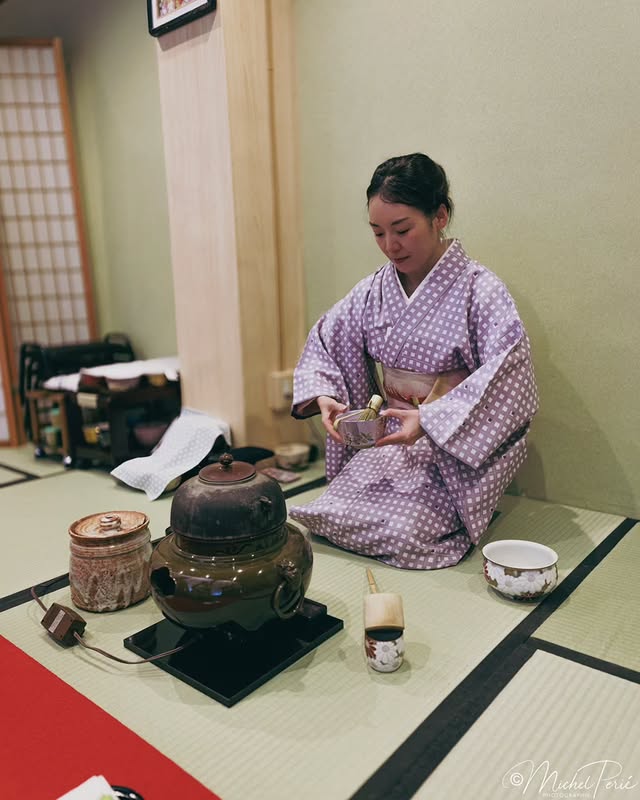
The tea ceremony is a calm and slow ritual held in a quiet room or a peaceful garden. You’ll sit on the floor, watch the host prepare matcha with precision, and enjoy the beauty of minimal surroundings, seasonal decorations, and handmade tea utensils.
Importance of Experiencing the Tea Ceremony
The tea ceremony in Japan is more than just drinking tea; it’s a spiritual practice that emphasises respect, harmony, and simplicity. Every movement has meaning, and the vibe is calm, focused, and intimate. It’s a quiet moment of connection between host and guest.
Things to Experience
- Learn how to whisk and sip matcha
- Understand the philosophy behind every step
- Wear a kimono for an immersive cultural touch
- Visit a tea house in Gion or near a temple
For a moment of stillness and tradition, you must experience it.
Samurai and Ninja Museum
Step into Japan’s warrior past at the Samurai and Ninja Museum in Kyoto- an interactive journey through history, legends, and martial arts. It is the best place to visit for families and history lovers.
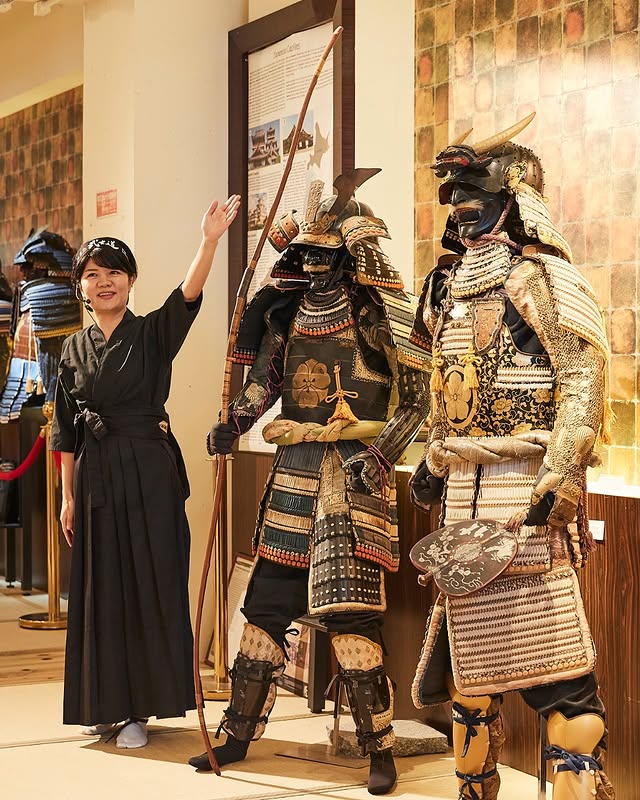
The museum features well-curated exhibits of real samurai armour, swords, ninja weapons, and ancient scrolls. There are lifelike displays, historical artefacts, and photo zones where you can dress up as a samurai or ninja. The space is fun, informative, and perfect for all ages.
Significance of This Museum
This museum brings Japan’s warrior culture to life. You don’t just learn- you experience. The vibe is lively and engaging, offering activities that take you beyond textbooks and into action.
Things to See and Do
- Experience wearing authentic samurai armour and capture some photos.
- Join a sword or ninja star-throwing lesson
- Learn about bushido (samurai code) and ninja tactics
- Enjoy guided tours with fascinating stories and demos
For fun, learning, and a bit of action, the Samurai and Ninja Museum is a must-visit in Kyoto.
Gekkeikan Okura Sake Museum
Sip into Japan’s brewing history at the Gekkeikan Okura Sake Museum– a must-visit for sake lovers and curious travellers in Kyoto.
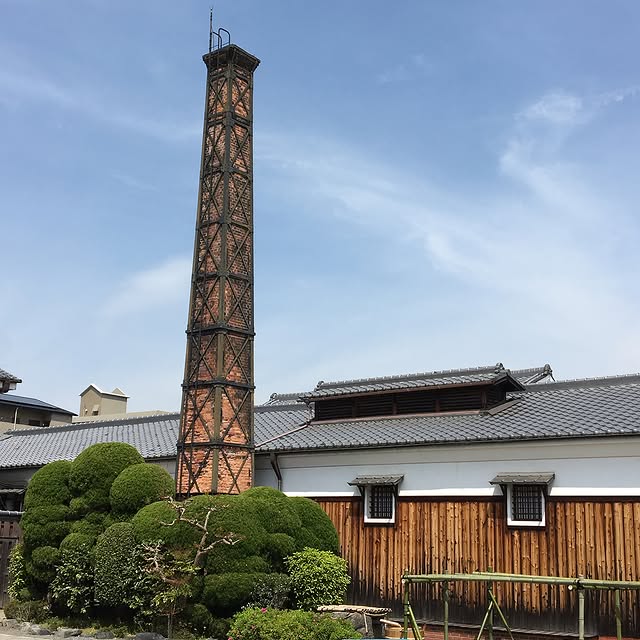
Located in the traditional Fushimi sake district, the museum sits in a charming old wooden brewery with vintage tools, barrels, and nostalgic decor. Inside, you’ll walk through centuries-old halls filled with the rich aroma of sake, lined with brewing equipment and historical displays.
Significance of This Museum
Founded in 1637, Gekkeikan is one of Japan’s oldest sake companies. The museum demonstrates the process of sake production and explains its cultural significance. The atmosphere is relaxed, informational, and comfortably classic.
Things to See and Do
- Explore original brewing tools and sake barrels
- Watch videos showing traditional brewing techniques
- Enjoy a sake-tasting session at the end of your tour
- Shop for exclusive Gekkeikan sake varieties and souvenirs
If you want to have an authentic experience of Japanese culture, visit the Gekkeikan Okura Sake Museum in Kyoto.
Fushimi Jikkokubune
Glide through Kyoto’s sake district on a Fushimi Jikkokubune boat- a peaceful and scenic ride along history-rich canals. A must-do for slow travellers and culture seekers.
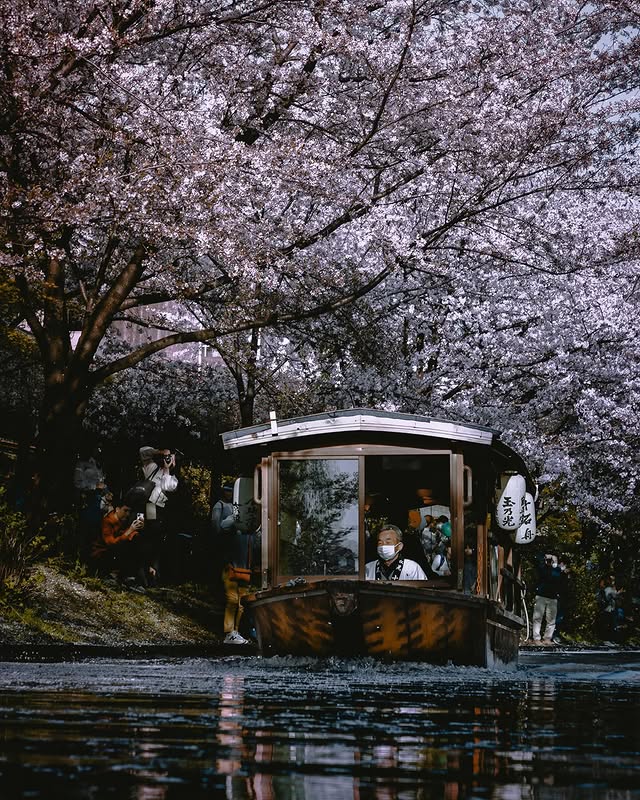
The Jikkokubune is a small, flat wooden boat that cruises gently through the calm canals of Kyoto’s Fushimi district. Surrounded by weeping willows, sake breweries, and old storehouses, the ride feels straight out of a historical painting.
Significance of This Canal
These canals were used to move sake barrels and other goods in the past. Today, the ride offers a quiet, charming way to explore Kyoto’s lesser-known side. The vibe is tranquil, romantic, and perfect for a slow afternoon.
Things to See and Do
- Enjoy peaceful views of traditional buildings and sake breweries
- Spot the Gekkeikan Okura Sake Museum from the water
- Visit during cherry blossom season for magical reflections
- Learn about Fushimi’s canal history from the boat guide
For a scenic break from the city buzz, the Fushimi Jikkokubune boat ride is a must-do in Kyoto.
Maruyama Park
Relax in Maruyama Park, the centre of Kyoto. This colourful park is known for its cherry blossoms, peaceful walks, and local charm. It’s a great spot for nature lovers and travellers who enjoy different seasons.
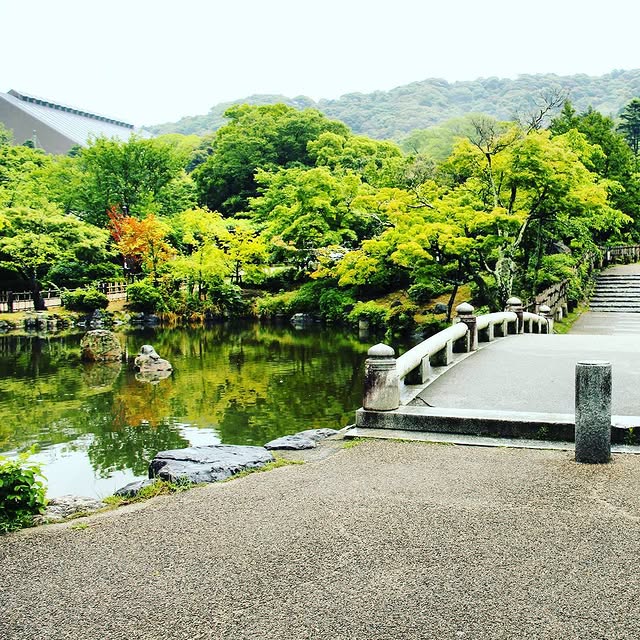
Maruyama Park is a spacious garden with winding paths, ponds, traditional bridges, and well-kept greenery. The highlight is the massive weeping cherry tree (shidarezakura) that glows beautifully at night during the Sakura season. The park is peaceful yet lively, especially during festivals.
Importance of the Park
As Kyoto’s oldest public park, Maruyama is a favourite gathering spot for both locals and tourists. It’s especially famous in spring for hanami, which is the best time to visit Japan for cherry blossom viewing. The vibe is cheerful and relaxed- perfect for picnics, strolls, or just unwinding under the trees.
Things to See and Do
- Visit during the sakura season for night-time cherry blossom views
- Enjoy a picnic or stroll among seasonal flowers
- Stop by the nearby Yasaka Shrine, right next to the park
- Grab snacks from local stalls or nearby teahouses
For beauty, nature, and Kyoto vibes, Maruyama Park is a must-visit.
Ramen Tasting
Slurp your way through Kyoto’s rich flavours with a ramen-tasting experience- from creamy tonkotsu to light soy broths. A must-try for foodies and noodle lovers!
Ramen shops in Kyoto range from cosy counter spots to stylish modern eateries. Bowls arrive steaming hot, filled with springy noodles, flavourful broth, and toppings like sliced pork, soft-boiled eggs, bamboo shoots, and green onions. Each shop has its own secret recipe and vibe.
Why is Ramen Tasting Important?
Ramen is more than comfort food- it’s a part of modern Japanese culture. Tasting different styles around Kyoto offers a delicious way to explore the city’s culinary scene. The vibe is casual, welcoming, and oh-so-satisfying.
Things to Taste and Do
- Try different ramen styles: shoyu (soy), miso, or tonkotsu (pork bone)
- Slurp like a local- it’s polite!
- Enjoy your bowl alongside some gyoza or a refreshing cold beer.
For an authentic food adventure, ramen tasting is a must-do in Kyoto.
Traditional Cooking Class in Kyoto
Join a traditional cooking class in Kyoto- an authentic way to learn Japanese recipes, culture, and techniques. A must-do for food lovers and curious travellers!
Cooking classes in Kyoto take place in intimate kitchens, traditional residences, or professional culinary studios. You’ll use fresh, local ingredients to create dishes like sushi, tempura, miso soup, or wagashi (Japanese sweets). The setup is friendly and often includes cultural tips and personal stories from the instructor.
Importance of Taking a Japanese Cooking Class
Cooking is a big part of Japanese daily life and seasonal culture. A class gives you more than just recipes- it’s a chance to connect with locals and understand the heart of Japanese hospitality. The vibe is warm, educational, and fun.
Things to Experience
- Learn to make sushi rolls or bento boxes
- Discover the art of dashi and Japanese knife skills
- Wear a traditional apron or yukata
- Take home recipes to recreate Kyoto at home
Participating in a cooking class is an unforgettable cultural experience that you shouldn’t miss in Kyoto.
Day Trip to Nara
Take a peaceful day trip from Kyoto to Nara- a city full of friendly deer, ancient temples, and rich cultural heritage.
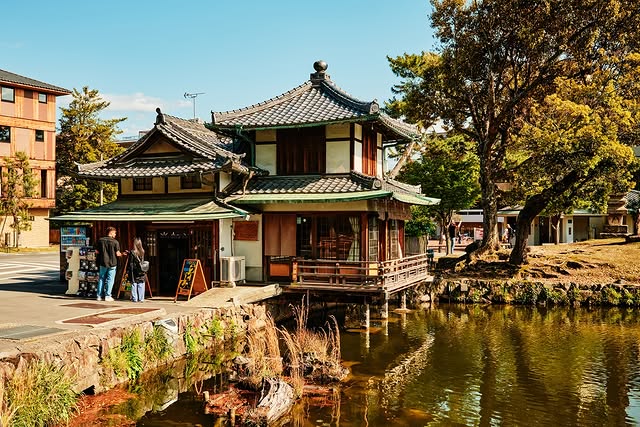
Just under an hour from Kyoto, Nara welcomes you with open green spaces, majestic temples, and deer roaming freely through Nara Park. The scenery blends nature with history, offering wide paths, pagodas, and forested hills.
Why Take a Day Trip to Nara?
Nara was Japan’s first capital, home to some of the country’s oldest and most important temples. The vibe is calm, spiritual, and family-friendly- perfect for a day of slow travel and discovery.
Things to See and Do
- Meet the free-roaming deer in Nara Park
- Visit Todai-ji Temple to see Japan’s largest bronze Buddha.
- Explore Kasuga Taisha Shrine with its stone lantern path
- Try local treats like Mochi or Kakinoha Sushi
For a quick escape packed with beauty and history, a day trip to Nara is a must-do from Kyoto. Additionally, taking a day trip to Osaka is great, as it offers many excellent places to visit.
Conclusion
From ancient temples and peaceful gardens to vibrant food markets and cultural experiences, Kyoto offers a wealth of attractions for every kind of traveller. In Kyoto, you can explore bamboo groves, enjoy matcha during a tea ceremony, or see geishas in Gion. Every experience feels like stepping back in time.
This historic city combines beauty and culture in every place. With many unique activities, your trip to Kyoto will be full of unforgettable memories, local flavours, and spiritual charm. In case you want to learn about the Japan tourist visa for Indians or book your trip, feel free to reach out to us. We would be glad to help you.
So pack your curiosity and comfortable shoes- Kyoto is waiting to be explored!
Frequently Asked Questions on Things to Do in Kyoto
What is Kyoto best known for?
Kyoto is famous for its historic temples, traditional tea houses, geisha culture, and seasonal beauty like cherry blossoms and autumn leaves.
How many days does it take to explore Kyoto?
Ideally, spend 3 to 4 days in Kyoto to cover top attractions like Fushimi Inari, Arashiyama, Gion, and Kinkaku-ji at a relaxed pace.
Is Kyoto walkable for tourists?
Yes, Kyoto is very walkable, especially in areas like Gion, Higashiyama, and the Philosopher’s Path. Public transport is also convenient.
What are some unique experiences in Kyoto?
Some unique Kyoto experiences include a tea ceremony, staying in a ryokan, wearing a kimono, and joining a local cooking class.
Can I do a day trip from Kyoto to Nara or Osaka?
Absolutely! Both Nara and Osaka are under an hour from Kyoto by train, making them perfect day trips.